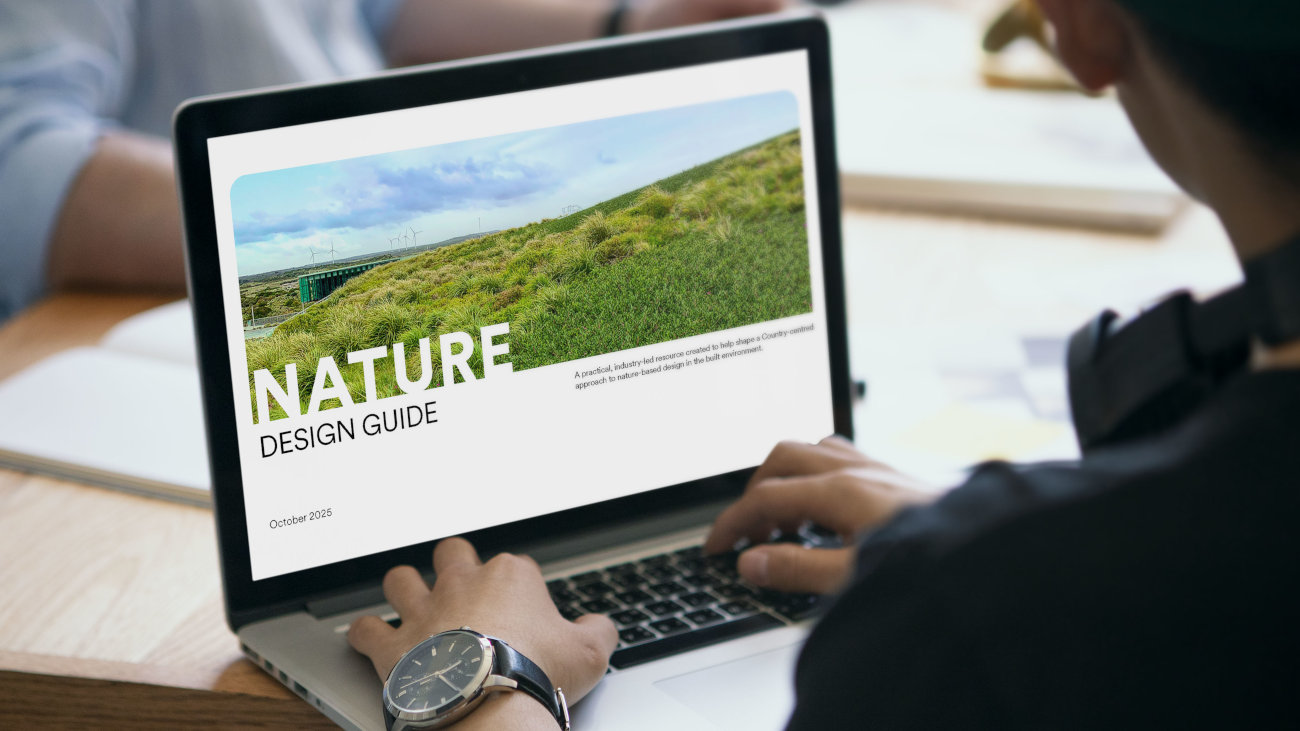Mott MacDonald co-authors new industry-led Nature Design Guide
Mott MacDonald, the global engineering, management and development consultancy, has co-authored the Nature Design Guide, launched today by a collaborative group of industry experts, researchers, designers and practitioners across the Australian built environment.
Available online and as a downloadable PDF, this substantial new resource – which includes a country and nature design tool – offers a forward-looking framework for anyone involved in shaping the built environment. It supports the integration of nature-positive approaches into design, with the aim of protecting and restoring biodiversity, regenerating ecosystems, supporting communities and delivering climate-resilient places through a country-centred approach.

Practical and industry-led
Developed collaboratively, the Nature Design Guide combines diverse knowledge, design elements and best-practice case studies. These real-world examples demonstrate measurable benefits achieved through embedding country and nature outcomes at the outset of projects.
The guide provides guidance on key country and nature concepts and processes, as well as a decision-making tool and practical steps to help project teams embed nature-positive outcomes into the design process. Featuring practical advice, the guide equips professionals to go beyond minimising harm – to actively protect, regenerate, restore and respect the cultural landscapes and natural systems that sustain us all.
Wide-ranging collaboration
Specialists from across industry and academia contributed their expertise, representing organisations including Mott MacDonald, Lendlease, OCULUS, Nature & Climate, Fytogreen, Living Futures Institute Australia, Arcadis, Living Seawalls, Curtin University, Francisii Ecology, Harrington & Low Consulting, Mansfield Advisory, Global GreenTag International, Hollow Log Homes and AECOM.
Together, they bring perspectives spanning environmental science, architecture, urban and landscape design, property and infrastructure development, sustainable construction and engineering, urban ecology, building materials design, regenerative building design and certification, sustainable product and materials certification, and higher education.
Reconnecting people with place
Mott MacDonald co-authored the Land section of the Nature Design Guide, which provides guidance on how to protect, regenerate and restore natural landforms and soil health, and introduce urban greening to connect to surrounding landscapes. This section recognises that every project presents an opportunity to regenerate land, restore ecological function and reconnect people with place. It also highlights how regenerative land practices contribute to climate resilience, liveability and connection to country.
Frances Badelow, managing director for Australia at Mott MacDonald, said: “The future of the built environment depends on how well we learn from, design with and care for nature; that’s integral to our approach at Mott MacDonald. The Nature Design Guide responds to growing calls from investors, clients, communities and regulators for stronger nature outcomes in projects, and aligns with global and national biodiversity and sustainability goals to position Australia as a leader in nature-positive design.”
A guide to inspire new leaders
Abigail Heywood, environmental sustainability expert and Climate Action & Nature Impact Advocate, who led the Guide’s development, said: “We hope that more leaders will emerge through interaction with the Nature Design Guide. It was important that this document was collaborative to share diverse knowledge and perspectives that readers can quickly engage with and apply to projects. It is our response to the growing call from investors, clients, communities and regulators for stronger nature outcomes in the built environment – and we hope it will accelerate outcomes in that direction.
“We intentionally developed the Guide to be a living document. This first edition is not a one-off – it will evolve with ongoing iterations as new design solutions emerge.
“Importantly, we wanted the Guide to be grounded and practical — to provide step-by-step support for decision-making across design, development and delivery phases. Above all, it helps ensure the best possible decisions are made to amplify benefits for all realms of nature.”
The Nature Design Guide is available to support designers, developers, planners, policymakers, communities and industry leaders in reshaping the built environment with country and nature at its heart.




